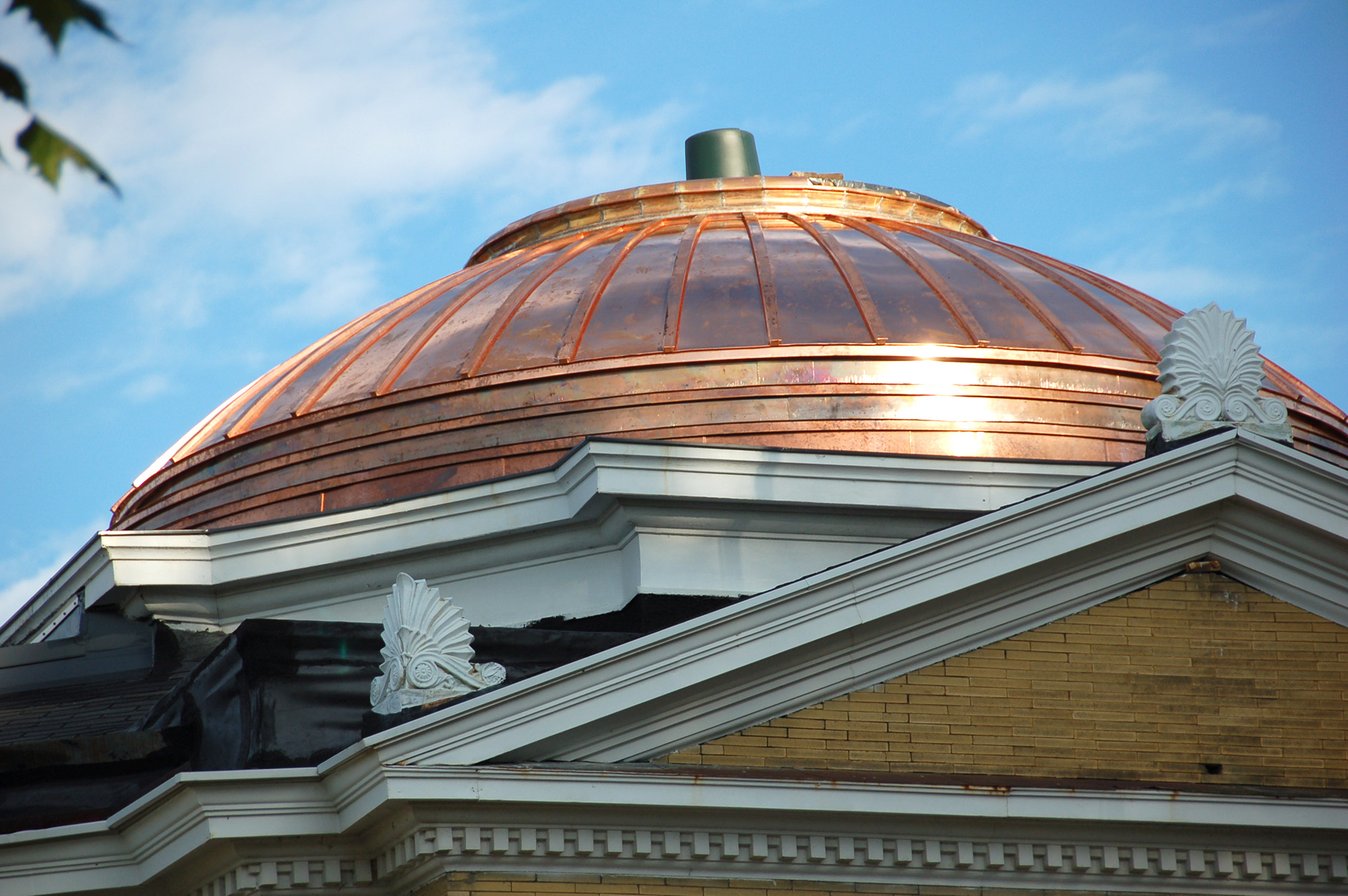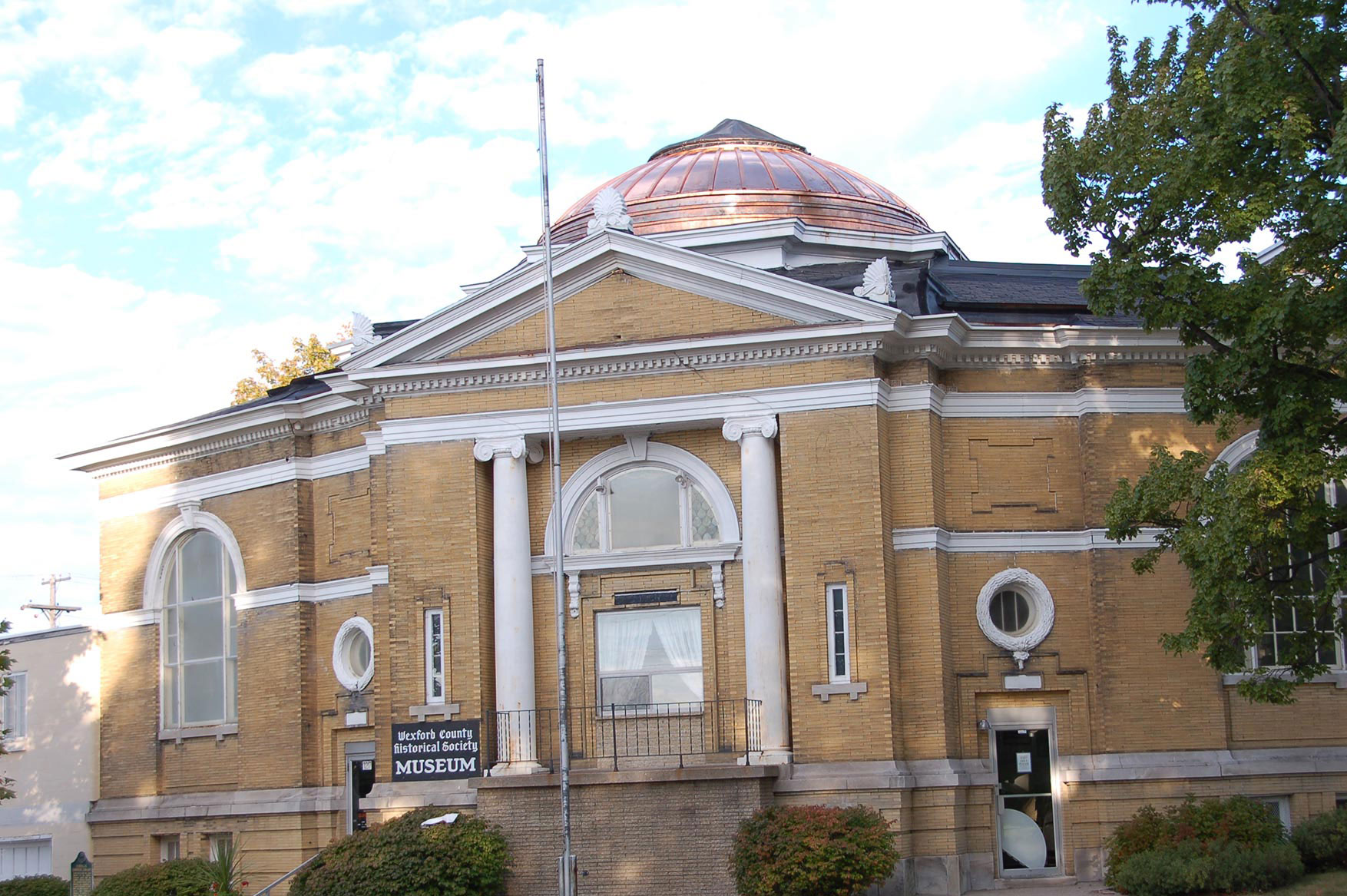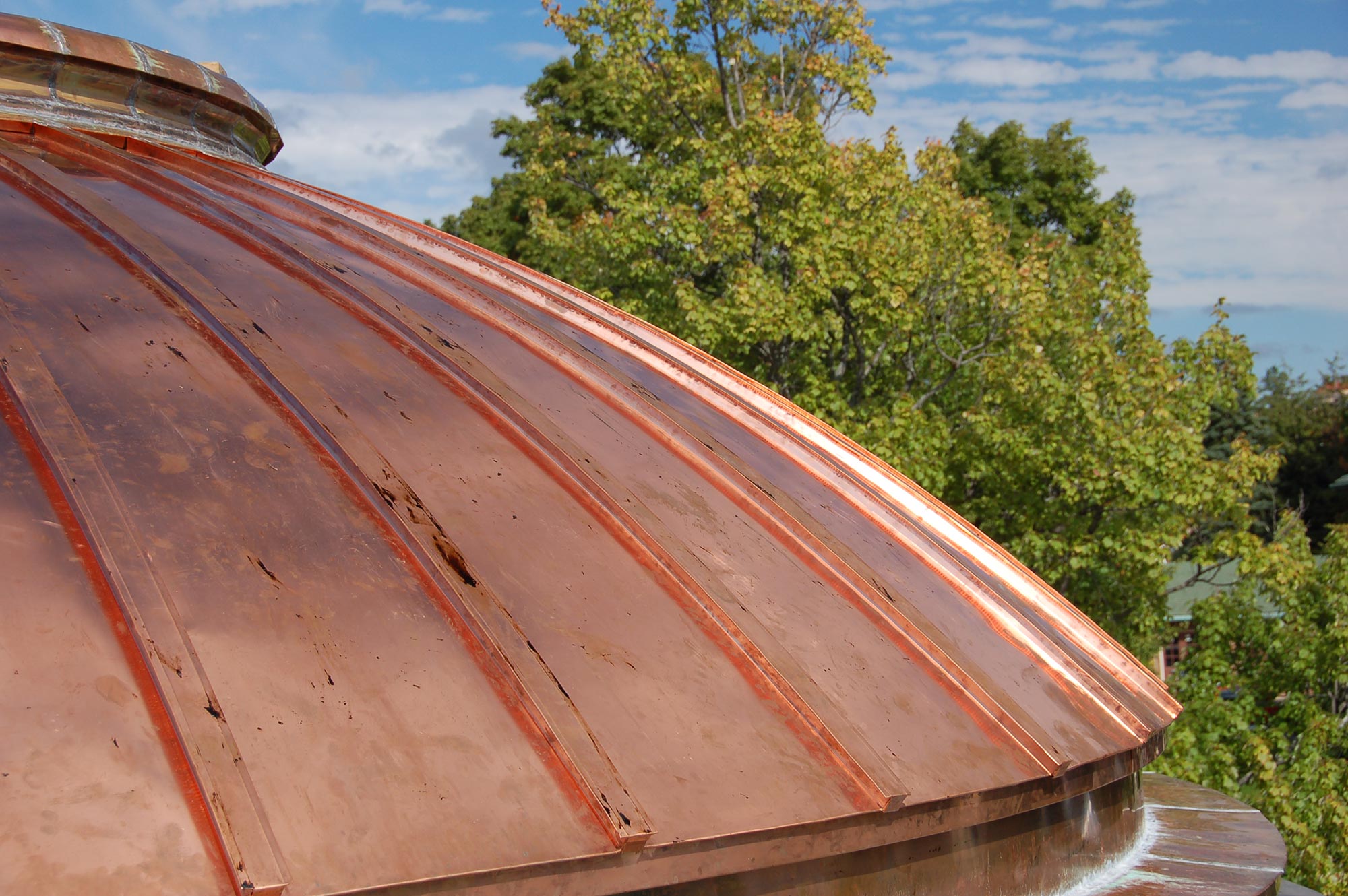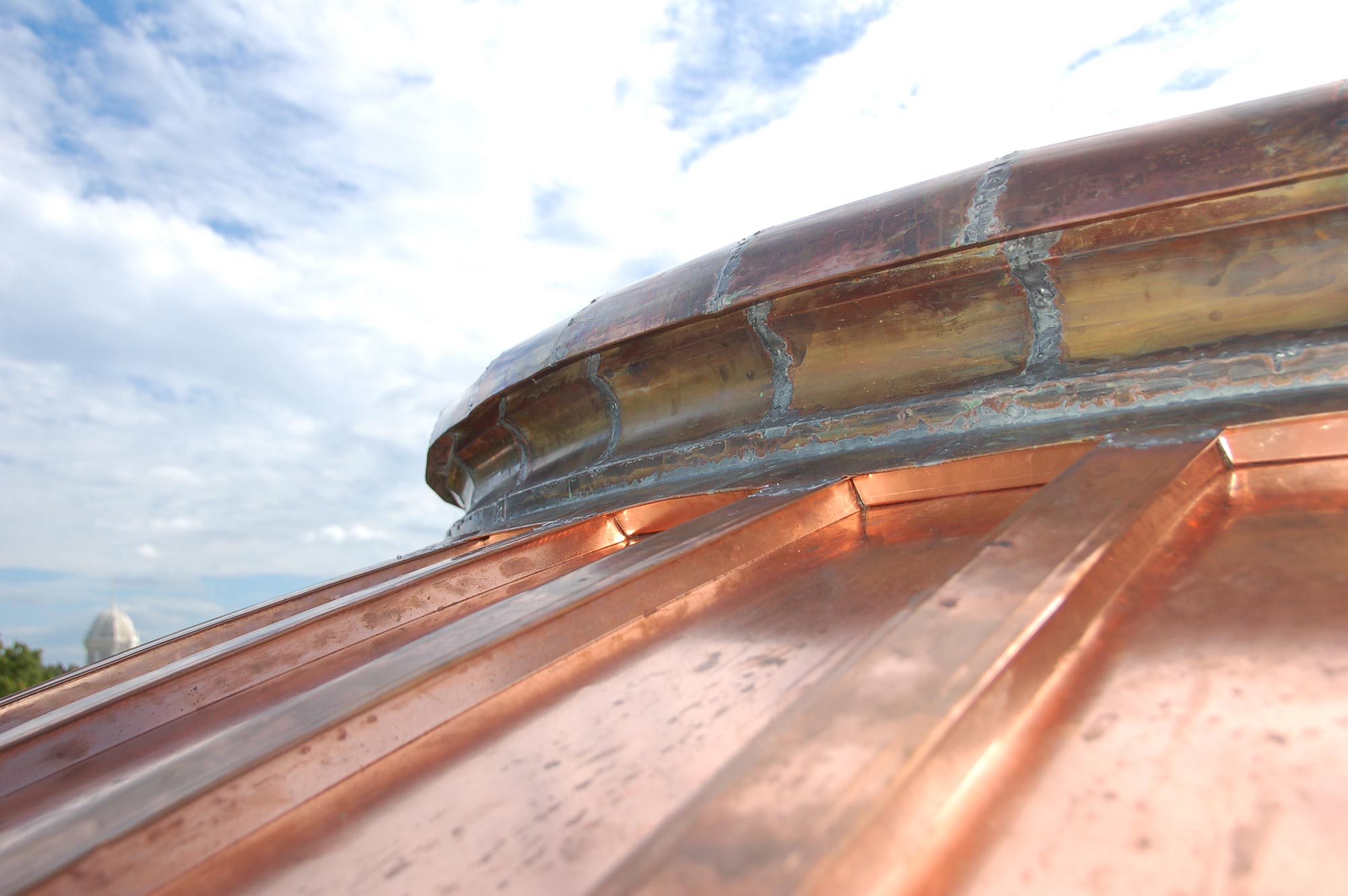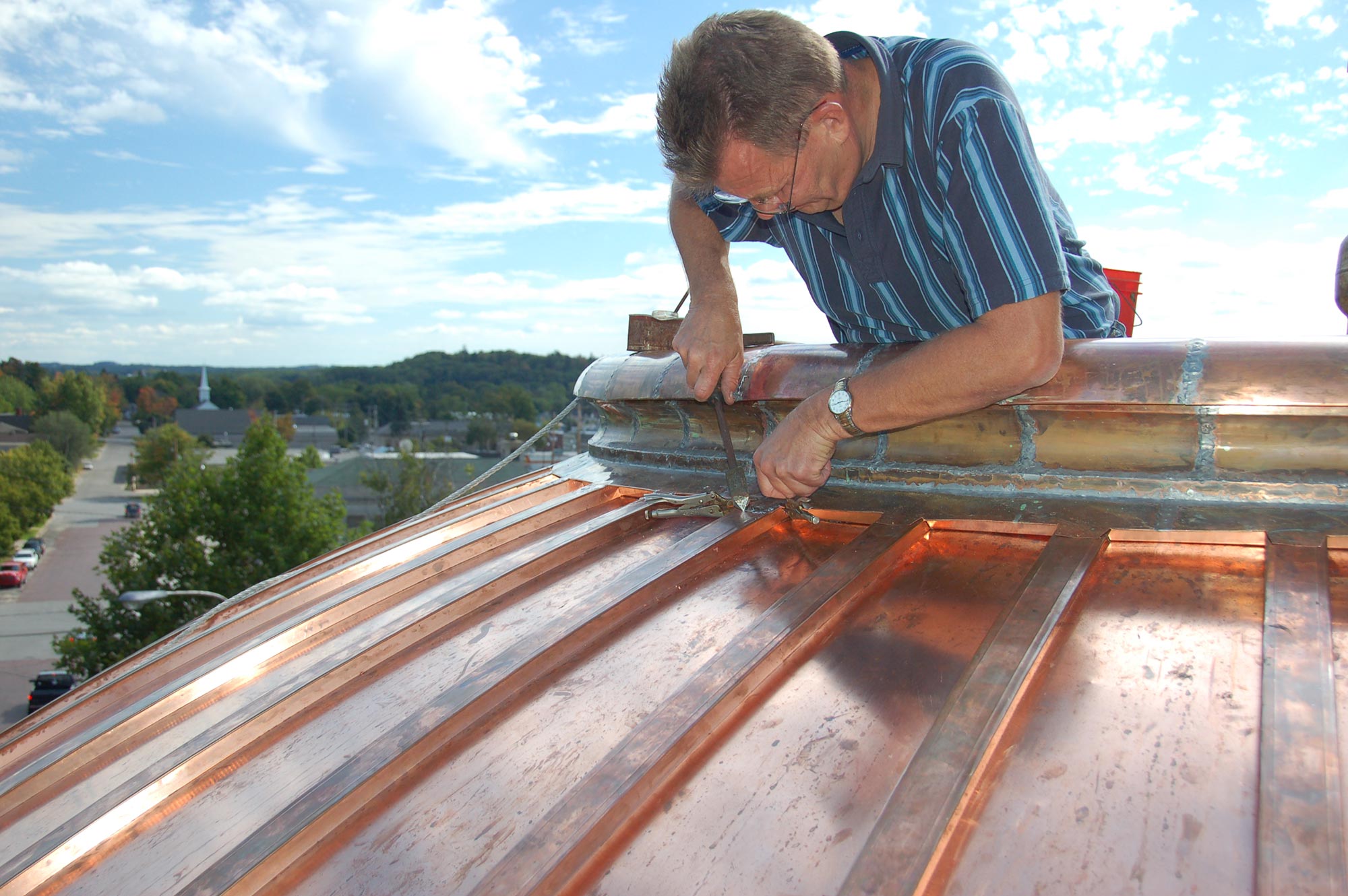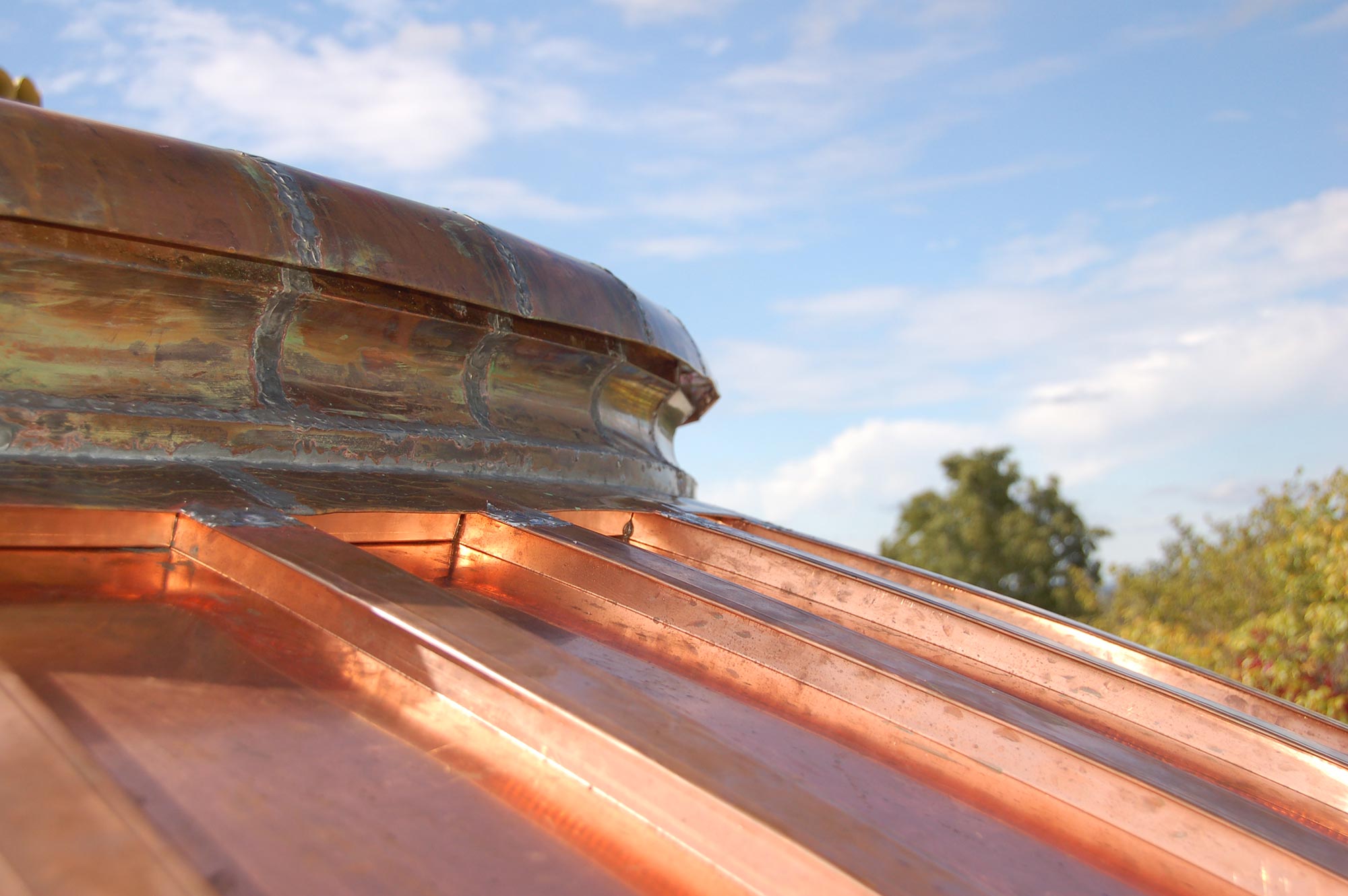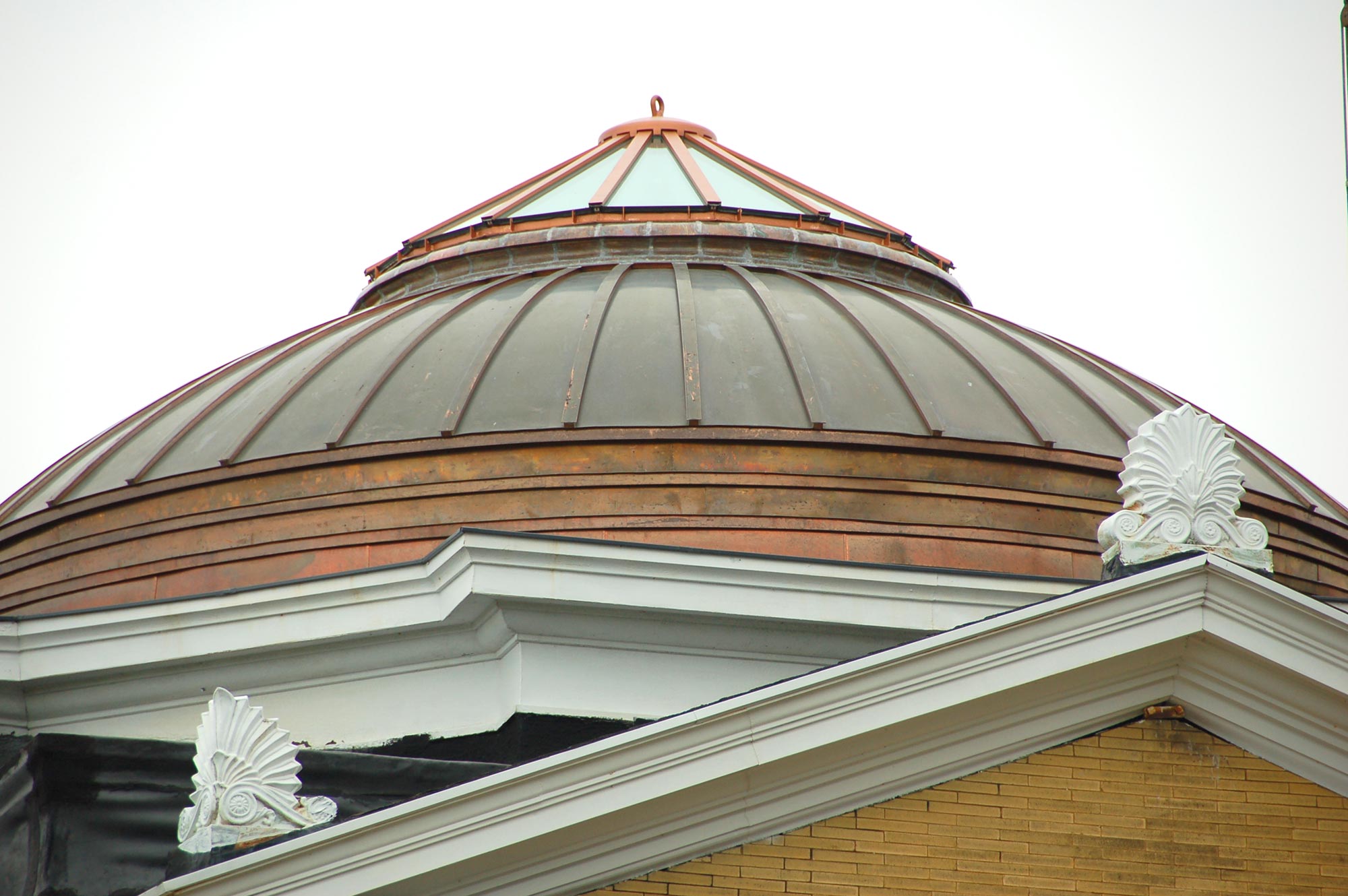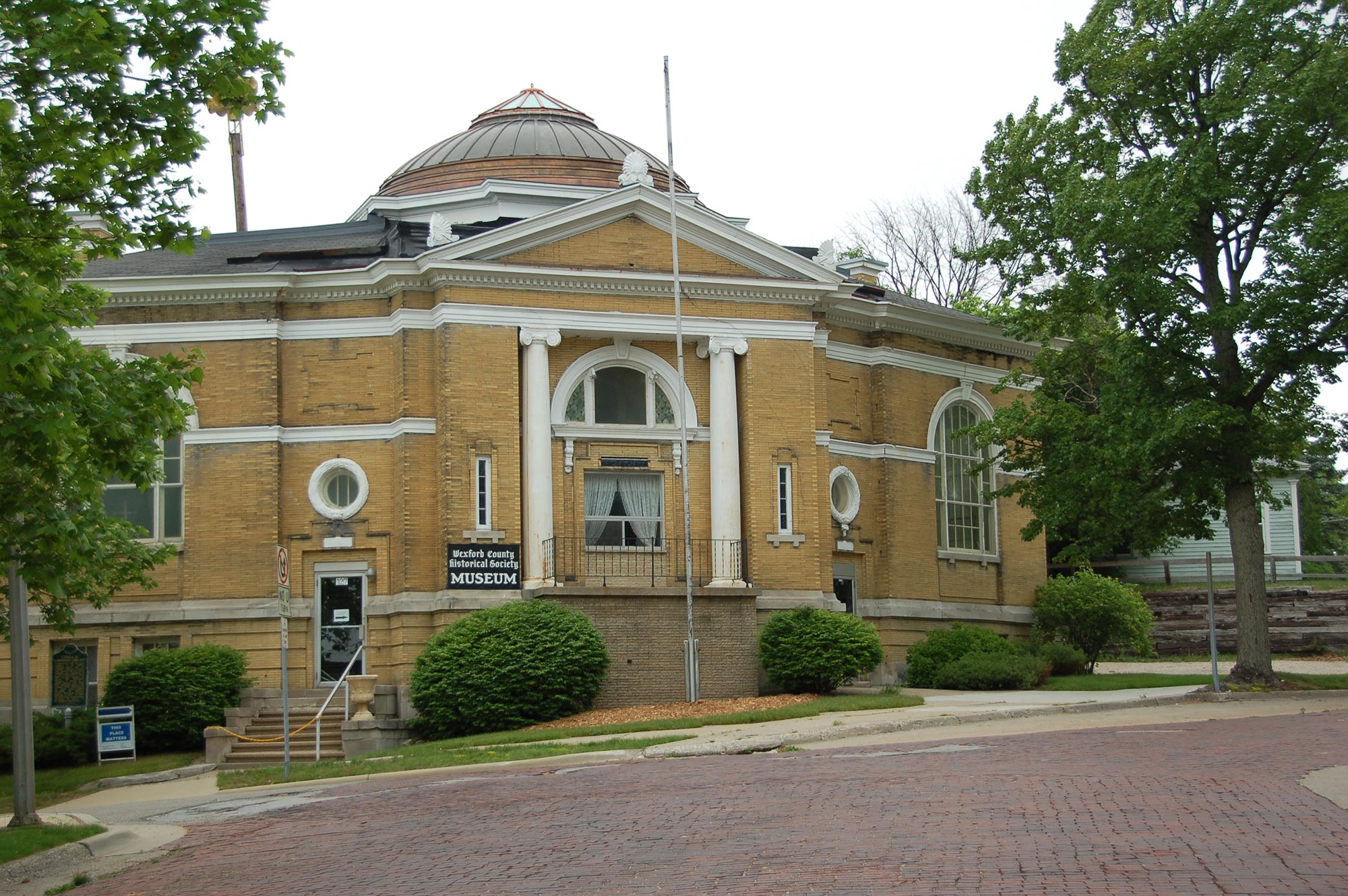The Request
The original copper dome had leaked for a long time, and over the years it was completely coated with tar. In 2003, Buist Sheet Metal first met with members of the Wexford County Historical Society (WCHS) to explore the leaks, study their roof and their dome, and gave them a proposal to replace the copper roof on the dome and surrounding metal work.
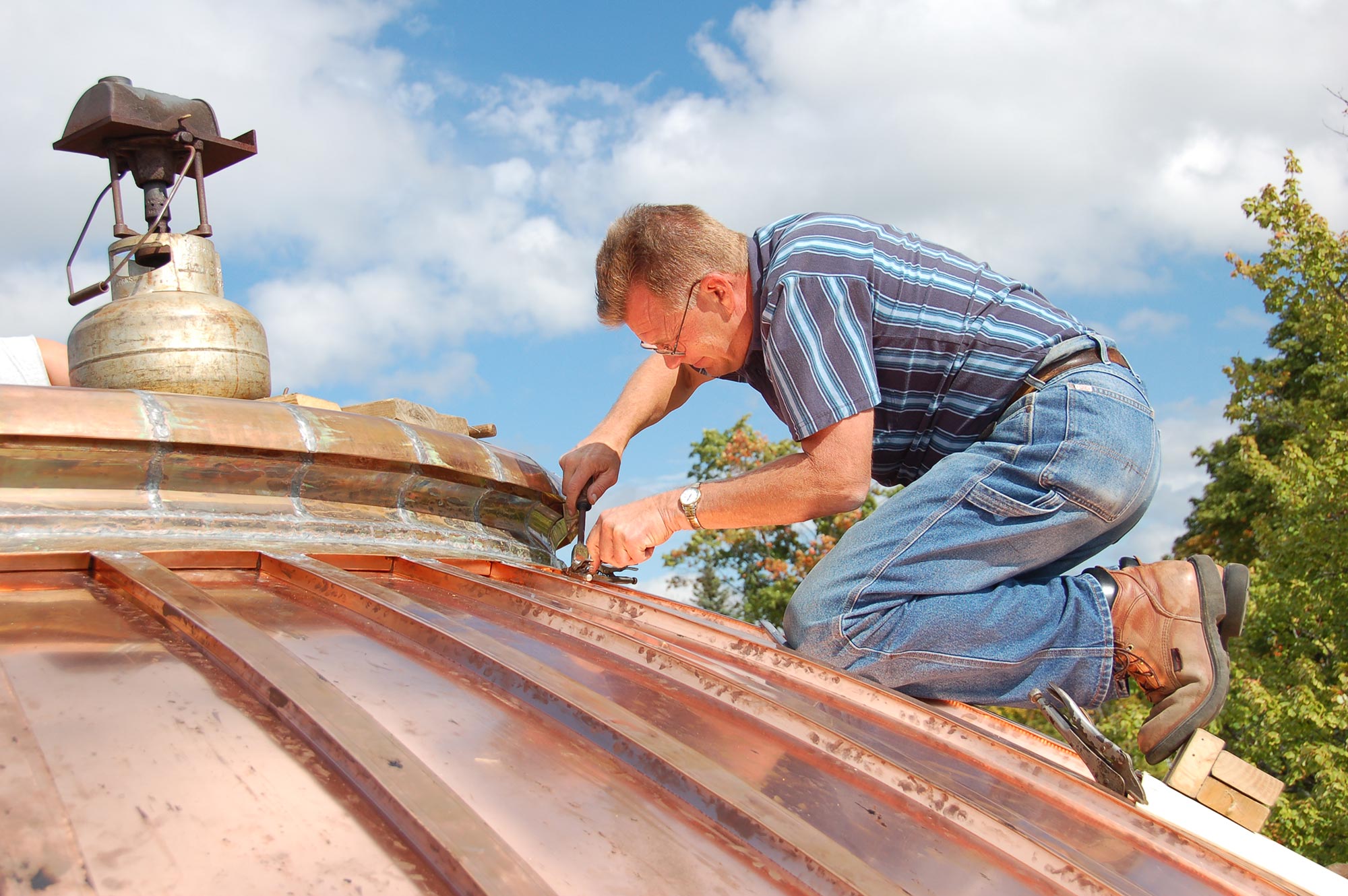
What We Delivered
We updated budget numbers for the WCHS in 2004, 2006, and 2009 to help the society’s board as they continued fundraising and built community support for the dome roof replacement.
Buist Sheet Metal began work on the Library building in July 2009. We began by removing the metal on the stepped shelves below the dome, leaving the dome itself covered until we had installed the new copper on these shelves and had soldered it watertight. We then removed the existing copper from the dome roof and installed the new copper there.
Materials Used
- Grace Ultra Ice and Water Shield
- Custom Hand Cut Curved Copper Roof Panels
- Copper Batten Caps
The shelf area was originally covered with steel. There was extensive rusting in this steel under the layers of tar. We replaced all of this steel with copper. The bottom shelf at the base of the dome has a circumference of just less than 80’. We began here, wrapping the 3 vertical areas and 2 shelves with copper. All of this copper is custom fit to each area and locked together so that all fasteners are concealed. The joints on the flat surfaces are first locked together and then soldered. This took a lot of careful planning and layout because the radius and size are different at each level.
We worked with a local carpenter who removed the glass skylight at the top of the dome, replaced rotten wood that we found, and assisted with any other woodwork that needed to be done. A new layer of 3/8” plywood was installed over the existing wood structure. We covered this with Grace Ultra Ice and Water Shield, which is specifically made to withstand heat under copper roofing.
The copper work on the dome was also very challenging. The dome surface curves in two directions, making it difficult to fit a batten seam panel to this type of roof. The original roof had been installed with a U-shaped panel and a separate batten cap installed with exposed nails in the side of the batten. Nothing was locked together. With careful layout and planning, we installed a batten seam roof using details that good craftsmen have used for many years. This involved a lot of handwork. Wood battens were wrapped with copper cleats and then installed between the roof panels as we installed them. These cleats were then locked onto the panels, securely anchoring everything in place. Copper batten caps were then installed over the wood battens and locked to the panels. The panel size was carefully calculated so that we would end up with the same size panel when we came around the dome to the starting point. (Find it if you can – the last panel is ¼” smaller at the top and 3/8” bigger at the bottom.)
The molded ornamental trim at the top of the dome and at the base of the skylight was a very complex profile to fit around a curve. We made this profile from several different pieces, with some of them segmented and others made in longer pieces that were then curved. We made a mold to fit these together in our shop. Then they were soldered into 5 pieces approximately 6’ long. These were installed on site, locked onto Z clips installed at the top of each panel, and soldered to the batten caps. The 5 pieces were soldered together in place to complete the installation.
The Results
The completed project now has copper on all levels eliminating the potential for rust. With everything locked together and no exposed fasteners, this dome will now protect the building and the historical contents for the next century. The dome stands out prominently on the top of the hill as a historical monument at the Wexford County Museum.
